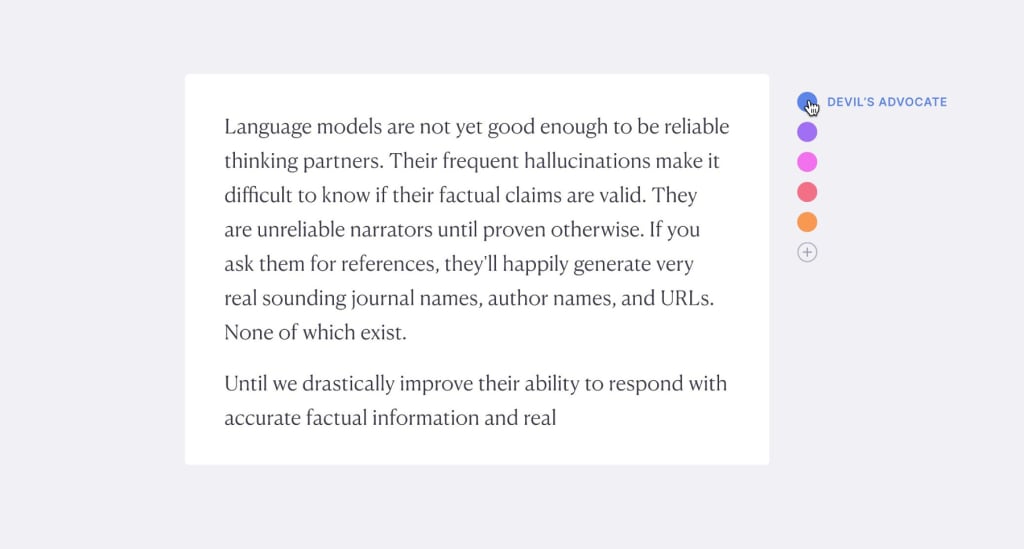Customer discovery is the process of identifying your target customer base and understanding their needs and pain points to best develop a successful product.
In this article, you will learn the importance of this process, how to identify your target customer, and how to conduct and analyze customer interviews to validate product ideas.
Table of contents
The importance of customer discovery in the product development process
Have you ever wondered how entrepreneurs just come up with product ideas and magically sell them? How do product people just know what to build to please customers and get them to pay for a solution?
The most successful products are not built at random because they were a “cool idea” someone dreamed up after a night of drinking. Successful products are built because someone used customer discovery first to understand market needs and pain points and develop their solution around them.
Customer discovery allows you to identify root problems. If you don’t have a full grasp of the root problem your customers are facing, you could be developing solutions for the wrong problems or problems that don’t actually exist. And if you develop a solution for a problem that doesn’t exist, there will be no market need and therefore no one to buy your product, and your company will fail.
Customer discovery also allows you to begin building relationships with your target customers. This will help you understand the market and user personas better, and it will allow you to grow your network of potential future customers and partners.
Breaking down the customer discovery process
The customer discovery process can be broken down into different phases. We’ll go into detail about them below.
Identifying the target customer and their needs
It is important to identify the target customer not only so you build the right product, but so that you can market it to them in the spaces they most commonly occupy.
At first, you may want to target entire markets because you have no doubt that your idea is so incredible and life-changing that the entire world needs to use it! However, we cannot establish world domination on the first release.
Developing a fully-functional app that has all the bells and whistles and can “do it all” is a surefire way of over-developing and wasting resources (like money and time) — all so you can have an app that may or may not meet your target customer’s needs. We need to start smaller than that by breaking the market down into submarkets and then identifying target customers within those submarkets.
It’s normal to come up with multiple customer types that may share pain points and could use a similar solution to the one you created but it’s important, especially at the beginning, to limit your target customer to one primary user persona. Getting that right will help you establish your product in the market, begin collecting feedback, and allow you to quickly expand and evolve your solution.
Your product idea can help you here and lead you to discover the best target customer that aligns with your solution. However, until you begin actually talking to customers, it can feel a bit like a guessing game. That’s why you should move quickly and begin talking to as many customers as you can so you can identify the right target customer faster.
Gathering and analyzing customer feedback
Customer interviews and the best way to get feedback and better understand your target customer. Create an interview guide and begin meeting with a variety of different potential customers. From there, you can begin establishing different user personas based on their needs and problems and identify the user persona for which you wish to develop a solution.
A market analysis done in tandem with this exercise helps determine which user persona to go for.
Creating customer interview guides
To create an interview guide, you first need to understand the demographics of your customer base. Things like gender, age, and occupation are sometimes as important as their buying habits. Learning how they make purchasing decisions will help inform your marketing, design, and product development strategies
Next, you’ll need to understand the pain points they experience within the market segment you are targeting. If you learn nothing else from this article, please remember that learning what the customer’s pain points are and identifying root problems are the most important things you can do when talking to customers. Your solution should either stop or prevent your target customer’s pain points. If it isn’t, your product will not be valuable!
Once you have conducted your customer interviews, you must analyze the data so you can identify trends, common pain points, and key concepts that will help you make well-informed product decisions.
Analyzing customer interviews
After you collect customer interview feedback, you’ll have to analyze them, of course.
Affinity mapping can be used to identify common insights and themes from your customer feedback data. Identify important statements made by the customer and bucket them into categories (use a simple Kanban tool like Trello to do this).
For example, let’s say you were interviewing customers on how they plan vacations. Customer 1 tells you that they use travel blogs and customer 2 uses a guidebook. You could group those statements into a “current solutions” bucket to make it easier to get a full glimpse of your target customer. Affinity mapping is a nice way of organizing all your data points into themes for easy review.
Similar to affinity mapping, you can use highlighting or tagging to identify themes within your customer interviews. Simply highlight pivotal moments in the interview such as pain points, current solutions, emotions, likes, dislikes, etc. in different colors depending on the theme. You can later look at all the tags for “pain points” across your interviews to identify common trends.
Synthesize the data from each interview into one paragraph so you can easily understand the main points and concepts from each interview.
Subscribe to our product management newsletter
Get articles like this to your inbox
Finally, word clouds allow you to combine all your customer feedback data and immediately identify common and shared key words, concepts, and topics.
Techniques for conducting customer interviews and surveys
If it isn’t already obvious, a big part of the customer discovery process includes finding out who your target customers are and what they care about. There are a few tips and techniques that I’ve found helpful for conducting this type of research, which we’ll go into below.
Avoid yes or no questions
Avoid questions where the answer is either a “yes” or “no,” unless you will be following it up with a probing question depending on the answer. These types of questions rarely do not give you the information you need to help inform your product development direction.
For example, instead of asking “Do you like your current solution?” you can ask “What do you like about your current solution?” By asking the second question, you actually get to discover more about the customer, their needs, and your potential competition.
Be open-minded
By the time you get to the customer interview phase, most people have already come up with an idea for a solution. Do not let this idea get in the way of you investigating and discovering true market needs. You don’t want to ask questions that just confirm your idea. It’s okay to be challenged and to ask difficult questions that get down to the root problem (and potentially threaten your original idea).
Avoid leading questions
Do not ask leading questions that influence the customer to answer in a specific way. Try to keep your questions as open as possible to leave room for the customer to answer truthfully.
For example, instead of asking “How bored are you with your current solution?” you can ask “How does your current solution make you feel?”
Incentives
What’s in it for your target customer? Can you offer the customer anything in return for their time? Once you establish relationships with people and customers, it is easier to meet with them in the future without incentives. However, if you are just starting out, incentives may be necessary to attract target customers for an interview.
Whether that be a $15 gift card to Starbucks or a free trial of your product, you be the judge. Like product development, you can put something out there quickly and change your strategy if you get no bites!
Social media is your friend
Places like Twitter, Reddit, online forums, Fiverr, etc. are great places to find people interested in interviewing. But do understand your market before looking for people to interview. Market discovery will help inform you as to where your target customers live and breathe.
For example, if you are developing a solution for middle-aged professionals in the legal industry, TikTok is probably not the best place to find those people.
Press record
Try to record the interviews. Even if you are an efficient notetaker, you could miss subtle cues like changes in body language or facial expressions that could be informative. Of course, always get permission to record before doing so!
The value of meeting in person
In our digital age, apps like Zoom and Google Meet make it much easier to conduct customer interviews from anywhere in the world. However, do not discount the value of an in-person interview if possible. You can learn a lot from talking to someone but being able to see them work provides you with insights you would have never gotten in a standard interview.
For example, you could be interviewing a customer about a mobile app. Maybe the interview went great and you got a ton of great insights from them because they use a mobile phone in their free time. However, you go to make an on-site visit and see that mobile phones are restricted in their offices and they conduct all their work on government-regulated computers.
Yikes! While this is an extreme example, you’d be surprised what you may miss by not seeing their physical space and how they work.
How to use customer discovery insights to refine and validate your product idea
Often, lightbulb moments happen during customer interviews. You may ask a question and receive an answer that challenges your preconceived notion of what their pain point was. Or maybe you received an overwhelming amount of feedback regarding a completely different part of the process that your original idea didn’t touch.
Make sure to write your feelings down while the interview is happening if possible! Your insights, emotions, and ideas matter too in this customer interview process. When you go back and analyze the data, you can reflect on both the customer feedback and your own opinions and ideas at the time of speaking to the customer.
Most customer interviews I’ve conducted are filled with my own statements like, “We should update the designs and contact this customer again to get their feedback” or “This pain point validates that one feature I put in the backlog,” to name a few.
Analyzing the feedback allows you to make the appropriate changes to your product to create a solution that is valuable to your target customer. It’s possible (but unlikely) that everything the target customer said validates your ideas perfectly and you don’t need to change a thing!
Maybe you learned that you were on the right track but need to make some serious design changes to account for a very specific challenge your target customer faces that you didn’t know about until you talked to them. Or maybe the feedback you received from these interviews did not validate your product idea at all!
First, take a second to thank your lucky stars that you didn’t build anything before talking to customers, and then see if you can pivot based on other pain points your target customers did talk about.
Common mistakes to avoid during the customer discovery process
The biggest mistake made during the customer discovery process is purposefully searching for data that validates your solution. It is so easy to just bring up your product idea with friends, family, or whoever will listen to get some quick validation and feel good about yourself but this is a terrible thing to do. You will likely get validation but only because these people are just being nice and supportive to you.
Your close network is very unlikely to be in your target customer group and even if they were, simply pitching an idea is no way to get honest and helpful feedback. Avoid pitching your idea at all costs and instead, focus on conducting interviews with your target customers only.
Incorporating customer discovery into feedback for ongoing product improvement
Customer interviews are not something you only do once. You want to keep in close contact with your customers and meet with them regularly because their needs are constantly shifting and evolving as the market and available technologies change. As you continue developing your product, it is important to continue meeting with customers so that you stay aligned with them.
As you nurture your relationship with these customers, you will not only better understand their needs and the market, but you will have also created a relationship with that customer where they feel valued by you (and your company) and invested in your product.
The tools you need for conducting customer discovery are simple and cheap (so long as you have an internet connection)!
- Microsoft Office or Google Suite — somewhere you can easily prepare your interview questions and take notes once meeting with customers. Both software companies make it very easy to share documentation, link to other documents, highlight, tag, etc.
- Kanban board — a free solution like Trello or Notion can be helpful when conducting affinity mapping after your interviews have been completed
- Social platforms — these can be helpful in networking with your target customers to find people interested in interviewing. Reddit, Twitter, and LinkedIn are all great places to connect with your target audience
- Gifts/money — something you can give to your customer in return for their time and insights
Conclusion
The customer discovery process is necessary to complete if you want to better understand your customer base and develop actual valuable products that solve an existing root problem for said customer base.
Asking non-leading, probing questions about your customer’s experience, their pain points, their likes/dislikes with their current solution(s), and more will help you gather the data necessary to evolve and validate your product solution so it can be successful in the market.
Featured image source: IconScout
LogRocket generates product insights that lead to meaningful action
LogRocket identifies friction points in the user experience so you can make informed decisions about product and design changes that must happen to hit your goals.
With LogRocket, you can understand the scope of the issues affecting your product and prioritize the changes that need to be made. LogRocket simplifies workflows by allowing Engineering and Design teams to work from the same data as you, eliminating any confusion about what needs to be done.
Get your teams on the same page — try LogRocket today.
Source link







Leave a Reply